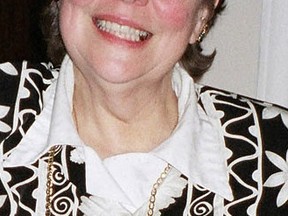The World is a Stage

Article content
There were five local Oatmans in World War I; one didn’t come home.
The Oatmans left Holland to the United States generations ago and in 1833 Darius and Jerushia Oatman moved up to South Norwich, Oxford County. They had a passel of children, who then had children, and then came our five cousins.
Three of those five were the children of Arthur Lorne Oatman. The oldest of the three, and first to sign up of all the Oatman cousins, was Cecila Matilda Oatman who was 25 years old when she enlisted April 7, 1915 as a nursing sister in the Canadian Army Medical Corp (CAMC). She was sent to No. 10 British General Hospital in Rouen, then back to The No. 4 Canadian General Hospital in Shorncliffe in England before being sent with the whole No. 4 hospital to Salonika, Greece in the Mediterranean theatre. She stayed there for over a year, often ill with intestinal problems. She was shipped to Alexandria, Egypt to recover, then a little later, after surgery for appendicitis, she was shipped back to England.
Matilda even got a trip home on leave with hospital ship, transporting invalids. She was only gone for a couple of months then sent back overseas on a Toronto hospital ship servicing the Dardanelles. By October 1917 the whole of No. 4 CGH was sent back to England to Basingtoke where she stayed through 1918. In 1919 she married Major Harry Shields and they returned to Canada by summer. They had a long life.
Evalena Oatman, Matilda’s sister, was actually involved with the military although not officially enlisted until 1918. She too was a Nursing Sister, although I don’t know where she graduated. I do know she was working at the Toronto military base hospital in 1910. Yes, before the war started. Many of the nurses here tried to sign up many times but were needed at the base hospital and denied going overseas. Finally, in April 1918, she was accepted in the CAMC. Unfortunately I can’t find out where or when she was sent anywhere, yet. Married in 1925, she and Robert C. Blong had a long life.
Their brother Roy was 21 years old and a machinist in Tillsonburg when he enlisted in March 1916, while his sister Matilda was in hospital in Greece. He had been in the 24th Regiment Grey’s Horse militia, a cavalry regiment in Oxford and Waterloo Counties in 1908. The militias in Canada were the first contacted by the government to mobilize for war in August 1914. The Grey's Horse went, but evidently not with Roy. He did not enlist until eight months later. Unfortunately unless we get the military records from Ottawa, or a wonderful descendant gets in touch, we aren’t going to know where Roy served. Roy came home - whether he was wounded or not, we don’t know, but he did get married to Rebecca Lillian Silcox in 1926 and had a son Russell Blake Oatman.
The siblings' cousin Frank Oatman was born May 21, 1895, and was living and farming with his father, Angus Oatman at RR2 Tillsonburg. The first few years of voluntary enlistment was suffice, but by 1917 it had slowed and we were not sending enough men over to replace those in the slaughter fields of France. Prime Minister Borden went to France and was ‘shocked by the enormity of the struggle, and determined that Canada should play a significant role in the war, announced that compulsory service would be necessary.’ We know from Frank’s enlistment form, signed May 21, 1918 in London, Ont. that he had received a Military Service Act Letter #728167AC, conscripting him. Many who did not voluntarily sign up were condemned, however men working on farms were also needed on the farms to produce the food for the troops.
Frank was still in training in London when he married Edna May Benner in July 1918. It is unknown if he made it oversees before the war ended. He also lived long.
The last cousin, Wilfred B. Oatman lived on another farm at RR2 Tillsonburg with his parents William Hartwell and Sarah Etta Smith Oatman. Wilfred was a student at the Tillsonburg High School, turning 18 on Oct. 25, 1915, and enlisting three days later in the 71st Batallion. His enlistment papers proudly noted he was in the school cadets. Training and getting to the war takes months and when in England his battalion was divided and he went to the 44th. On Sept. 5, 1916, he was wounded in his right leg and sent to England to recover for five weeks after which he returned to the trenches near Albert, France.
The 44th Bn war diaries note that on Nov. 8, two work parties were sent out one to collect bricks a Poizieres and one to clean up Tara Hill. One casualty was reported. The next day the battalion moved to the front line trenches. Nov. 10, the weather was fine but there casualties. Nov. 11, the Battalion was relieved from the front and occupied old German dugouts. Nov. 12, the weather was dry but overcast and the area shelled. No casualties.
Either Nov. 8, or 10th, Wilfred was a casualty with shrapnel wounds to his head, legs and wrist. He died Nov. 12, 100 years ago and is buried in the Contay British Cemetery near Albert, France.
If any Oatmans out there have information or photos you would like to share, please give me a call 519-842-9416.